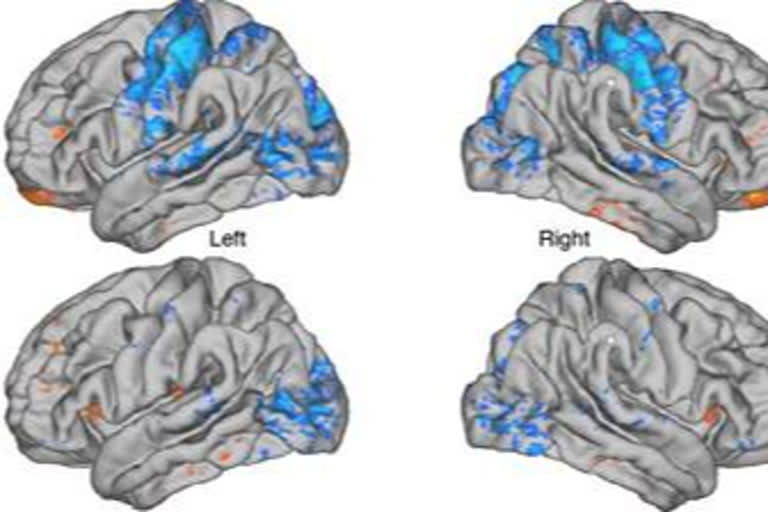New Delhi: Indian scientists and researchers have found that functional connectivity in the human brain changes due to consistent practice of meditation, which has been a mainstay in Indian Yoga traditions for ages. As per reports, Indian researchers found that consistent meditation modifies the connectivity between different relay channels of a human brain. These relay channels take in data from the sensory world and transmit it to the cerebral cortex of the brain. The cerebral cortex is the outer layer of neural tissue of the cerebrum of the brain in humans and other mammals.
There could be 14-16 billion neurons in the human cerebral cortex and being the largest site of neural integration in the central nervous system, the cerebral cortex plays an important role in attention, awareness, perception, thought and language, memory and consciousness. A study supported by the Department of Science’s (DST) Satyam programme suggested that consistent meditation allows a person to easy transition into a state of deep meditation, which makes it easier to meditate. However, the scientific understanding and knowledge of different stages of yoga have so far been limited.
Also read:Study reveals breathing in polluted air contributes to neurological damage
According to officials, some Electroencephalogram (EEG) studies, which record the brain’s activities, have found that a deep stage of meditation results in an increase in theta and delta waves in the brain. These theta and delta waves are generated during a relaxed stage but not in the sleeping stage. EEG tests are painless in nature and small sensors are attached to the scalp to pick up the electrical signals produced by the brain during the test. These signals are recorded by a machine and then they are analysed by experts. The study by Indian scientists showed that consistent practice reduces thalamocortical connection with the sensory regions of the brain. These findings were presented at the annual meeting of the International Society for Magnetic Resonance. The team consisting of Vaibhav Tripathi, Anju Dhawan, Vidur Mahajan and Rahul Garg, recorded brain activity with the help of Magnetic Resonance Imaging (MRI) of expert meditators and also those who do not regularly practice meditation. The brain activity was recorded before, during, and after meditation.
Also read:Vaccine immunity wanes rapidly as compared to natural immunity: Study
The results of the story were carried out by the Psychological and Brain Sciences Department of Boston University; School of Information Technology, Indian Institute of Technology (IIT), Delhi, Mahajan Imaging Centre in New Delhi, and the Department of Psychiatry of All India Institute of Medical Sciences in New Delhi. Reportedly, the results demonstrated and experimentally validated the concept of Pratyahara and Dharana associated with the withdrawal of sensory information, which allowed a reduction in brain activity that helped transcend into deep states of meditation. According to the study, a weak effect was observed across new practitioners, though not as strong as in the case of meditators, suggesting that the one-time effect of meditation is positive, but consistent practice results in long-term changes and make it easier to meditate.
Although MRI allows an unprecedented spatial resolution of the brain, it is slow as compared to EEG, which is a better proxy for the neuronal firing in the brain but without spatial coverage. In future studies, Indian researchers plan to record both EEG and MRI simultaneously to look at the brain waves during the slowing down of the brain and better characterise the spatiotemporal dynamics of meditation across the different states of 'Dhyana' and 'Samadhi'.



